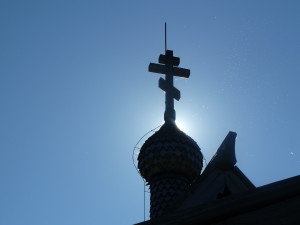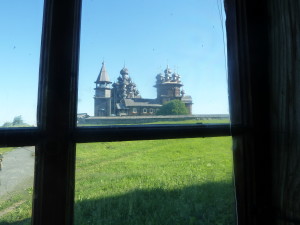The 2012 version of Anna Karenina, starring Keira Knightley and Jude Law as Anna and Karenin, features plenty of Russian darkness and bad behavior but not as many images of Russia as I would have liked. For those planning to visit Russia, the film is still worth a watch; what it lacks in actual Russian scenery it makes up for with its chronicle of Russian society, of a time.
Apparently, Russia’s elite of the 1870s faced the same problems that upscale couples do today: husbands preferring the nannies, wives opting for handsome strangers, the dilemma of trading a life of ease for one with someone more alluring. This is what happens when people have too much money and time on their hands. They think about themselves and about their own amusement, and some drink too much, take morphine, and decline. Others go on.
The darkness of Anna Karenina is the history of old. On film, Leo Tolstoy’s story entrances, as Anna’s well-dressed encounters with Vronsky tempt her to disregard her life of privilege and the ways that she has managed to keep it. Who doesn’t want dancing and jewels and theater and excitement? Some men get the girl, some with ease, others after waiting. Some patient men lose the girl. Some girls want a bit of everything. Karenin loses Anna to Vronsky and no one seems happy as a result; Levin, after being pushed aside by Kitty early on, eventually gets her. City-girl Anna, her options limited, her life a mess, ends up dead on the train tracks while Levin and Kitty seem joyous to be living in the country while living a somewhat simpler, or at least different, life.
The harsh lives of the servants supporting the society of pre-revolutionary St. Petersburg and Moscow is largely invisible, and the simple life in the country, now home to emancipated serfs and gentleman farmers, is exalted. After watching Anna Karenina’s appalling behavior—her easy willingness to take up with Count Vronsky even as her husband seems not bad but simply unexciting—I went from wondering whether the winters drive everyone mad to wanting to see Levin and Kitty and their baby after they’d endured a few snowy ones in Kizhi.
Russia, after all, is a place where czars killed children and enslaved their own people, where churches of “spilt blood” were built not to commemorate some godly event but to mark the spot of an assassination. Reconciling Russia’s dark history, not just in novels, but in leadership, with the easygoing people I met when I was there is not something done in an afternoon, or on a single trip. The Russians I met seem placid, even, willing to make do, are able to make do, to survive no matter what the realities, the environment, the political situation. They have accomplished something Anna Karenina could not.
—Lori Tripoli




